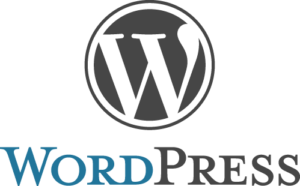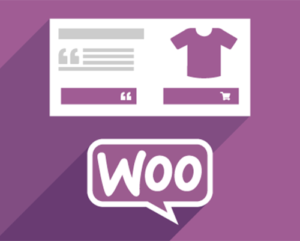The Woo-commerce plug-in explained for ecommerce
Ecommerce plug-in
When we say it’s the most popular, it’s the most popular ecommerce plug-in by a long way. Woo-commerce has over 82,375,929 downloads so far, and 93%+ of all WordPress ecommerce websites choose it over the other online store plug-ins available such as Ecwid, EDD or Shopp.
What is an ecommerce plug-in for WordPress?
WordPress is a Content Management System (or CMS), and the most popular and well used CMS available. It is used for leading websites from brands that include Disney, MTV and Sony to name a few. However, it is just a Content Management System and so out of the box, simply manages the design, layout and content of the website and not the actual selling of items or services.
However, if you’re looking to use the flexible and scalable open-source CMS for an ecommerce store, then downloading a ‘plug-in’ opens up this functionality to you. Woo-commerce is used by some huge names including the All Blacks shop, Cosmos magazine, UK leading pub retailer Green King and theatre giant BroadWay World. There are at least 5 million ‘woocommerce stores’ online.

Advantages of Woo-commerce
As the most popular choice for ecommerce on WordPress, there are clearly a lot of fans out there, so listing some of the advantages of Woo-commerce is quite easy:
Open source – As Woo-commerce is open source, it’s free. In addition, you have complete control over your eCommerce website. Unlike other ecommerce platforms, Woo-commerce pricing does not include licensing fees, which means you can create as many ecommerce websites and online stores as you want.
Built on WordPress – WordPress is the leading CMS worldwide and because Woo-commerce is built on top of WordPress means you can benefit from all of it’s information and features.
Multiple design templates. There are thousands of interesting, unique and responsive Woo-commerce designs and templates to choose from. All of them come with customisation options and whilst there are some that are paid for, many of them are available to use for free.
Flexibility. Woo-commerce is a plug-in for WordPress, but Woo-commerce has plug-ins of it’s own. You can add additional features to Woo-commerce with one of thousands of Woo-commerce specific plugins that offer additional functionality including shipping options, bookings, subscriptions, etc. Aside from plug-ins made specifically for Woo-commerce, you can also make use of the thousands of other WordPress plug-ins to add features such as GDPR assistance, contact forms, buttons, SEO, media galleries, security firewalls and more.
No limits. Woo-commerce puts no restrictions or limitations on how you run your online store. You can add as many products or services as you like, make unlimited sales, import and export product data, and use as much media as you want i.e. videos and images.
Online payments. Accepting payments can be a challenge if you’re not experienced in online payments. One of the most helpful benefits of using Woo-commerce is that it integrates with loads of payment services and gateways. Woo-commerce supports PayPal and Stripe by default, but most payment gateways available through plug-ins.
What can you sell on a Woo-commerce website?
You can sell absolutely anything on a Woo-commerce website. Typically, people sell physical products such as clothing, electronics, gifts, jewellery, homeware, anything at all really.
However, the amount of flexibility that Woo-commerce gives you means that you’re not limited to a traditional store in that way.
You can also sell online products and services, you can make and pay for appointments and reservations, you can sell subscriptions, and there are a range of plug-ins that can help you do that.
What do you need to make a Woo-commerce website?
Aside from downloading the plug-in, you only really need three things to make a Woo-commerce website.
• A domain name.
• A WordPress hosting account.
• An SSL certificate.
Your domain name can be bought anywhere and cost usually ranges from 99p to £20 approximately. That is an annual cost and needs to be renewed every year. If you’re getting a domain name for 99p that’s usually an introductory rate and it’s worth check what the cost will be following that.
Website hosting pays for where you keep all your content and media and it is often a monthly cost, although you can get a better deal if you pay for the year upfront sometimes. It can range from £5 – £40 a month depending on the size of your business, brand or store.
An SSL certificate is a kind of digital certificate that provides authentication and enables an encrypted connection for a website. It establishes an encrypted link between a web server and a browser, and it is this link that ensures that all data passed between the web server and browser remains private and secure.
This is essential when taking data and payments for your customer’s security. They can cost between £70 and £150 for a year. It’s worth shopping around for the best deal, and there are sometime additional discounts if you’re able to buy for 2 years instead of 1.
Once you have those things, you’ll be able to start creating a Woo-commerce website. As the use of WordPress and Woo-commerce are both free, these three things are usually the key online store expenses you’re likely to have during the set-up period.

How do I start off with a Woo-commerce website?
Key Webpages
There are a couple of key pages that no matter what, your Woo-commerce store is going to need. These are pages you’d see in any online store.
• Shop. This is where the products or services that you’re going to sell are displayed.
• Shopping cart. This is where customers can see items they’ve already added to be purchased, and where they can adjust their order before deciding to checkout. This might include updating quantities or removing items if they’ve changed their mind.
• Checkout. When customers are ready to purchase, this is where they choose the shipping and/or delivery they want and pay for their items or services.
• Customer account. This is a little like a profile page for customers that are, or have been, shopping with you. Here, they’ll be able to look at past orders and manage details such as addresses, names and contact details.
These pages are the ‘must haves’ and you’ll be walked through creating them up at the set-up stage.
Location
In addition, you’ll have to pick the area you’re based in – your ‘store locale’. This will include the country, the units of measurement i.e. metric or imperial, and the currency you work in.
Tax
Not most people’s specialist subject, but luckily Woo-commerce helps you work out the tax rates based on the store location that you’ve already chosen, i.e. it will point you in the right direction based on if you’ve said you’re in the UK, the US, the EU etc.
Payments
No doubt you’ll be charging for products and services and Woo-commerce gives you a number of choices at the start to implement as ways in which your customers can pay.
As PayPal and Stripe are the default, they’re definitely worth including. PayPal, in particular, is a popular method of payment as well as one of the fastest growing ways to pay; the number of accounts increases by around 22% year on year.
Other popular options are bank transfers or even cash on delivery. There are additional options at a later point using other add-ons.
Products/services
It’s only then that you start adding products and services. Obviously, you can add more at a later date, but you can initially add what you like, including what inventory you have (how many you have available to sell) and any product related shipping options based on size and weight.
Theme
Here you can choose the theme i.e. design and layout, that you wish to use for your online store. There are loads to choose from and it’s worth spending time deciding on one that you think would appeal to your target audience.
In addition, it’s important to look at how they appear on all devices. Lots of people shop on the move these days, and if people are going to shop with you on their phone or tablet it needs to be just as user friendly as it would be on desktop.
Going beyond the standard with a Woo-commerce store
Being a WordPress based platform, there are loads of other plug-ins that you can use alongside Woo-commerce to give your online store a real boost and encourage people to buy.
• SEO plug-ins such as Yoast. These tools will help you to make your online store more visible to people looking for your product or service on search engines such as Google.
• Social share buttons. These buttons help you to get people sharing your product on their Facebook, Instagram, Twitter or other social network pages, or send them in a message using platforms such as WhatsApp or Messenger.
• Multilingual tools. Even in the UK, around 7% of the population have a language other than English as their first language. Making your online store easier for everyone to read makes the customer journey better and make people more likely to buy.
• Contact options. People often have questions before they buy, so using something like an online contact form or even live chat means they are better placed to ask those questions. Not only are these people more likely to be confident in their buying decision, but this will also show you what information people want, that is currently not on your webpages. This gives you the opportunity to improve your content.
The future of Woo-commerce
Woo-commerce is now actually owned by Automattic, who own WordPress itself, which means that it will be driven by the product it works alongside.
The continued growth means there would be a strong community behind the growth and development of Woo-commerce as a part of WordPress, and the possible expansion of the ways in which it can be used.
